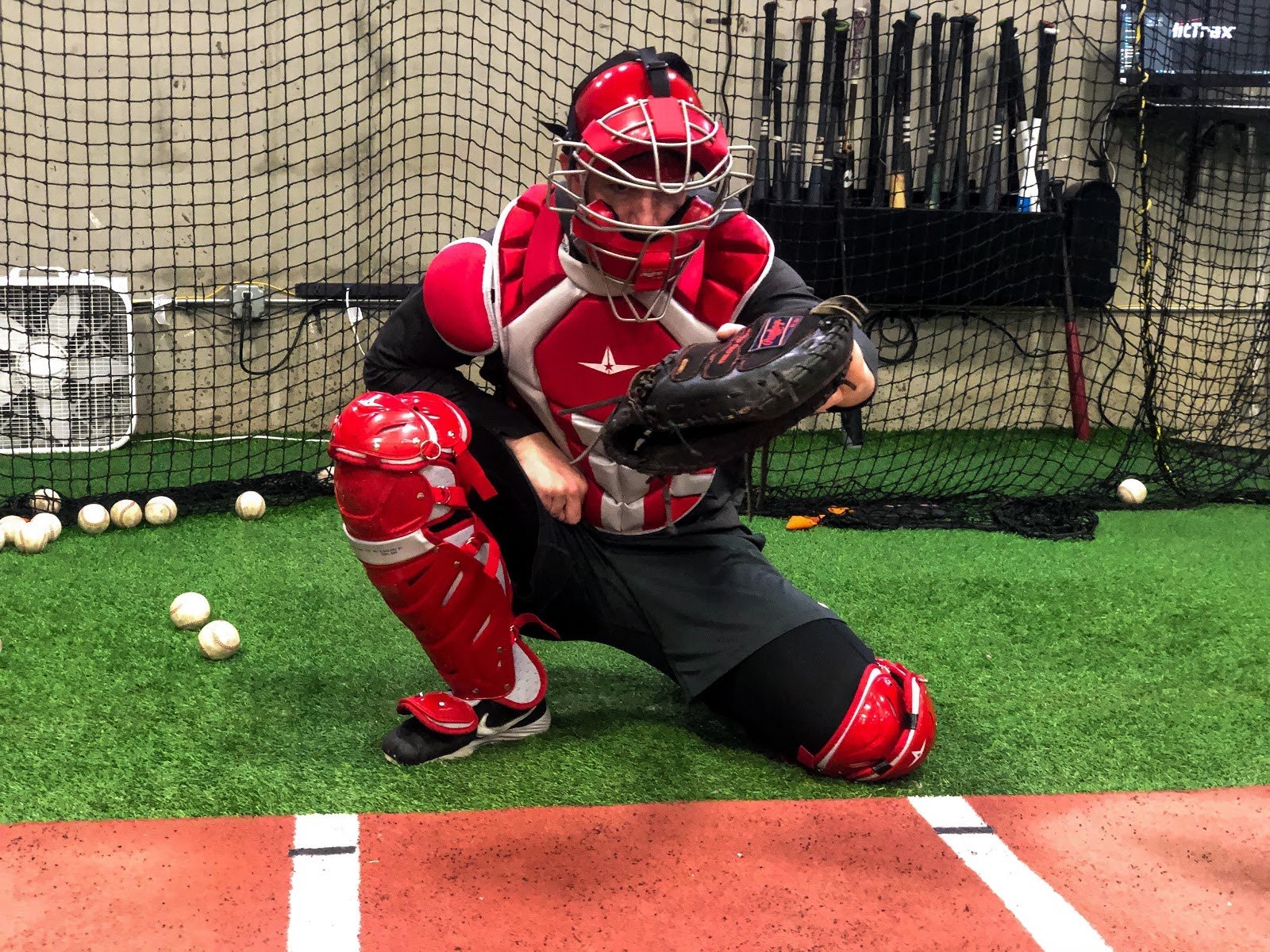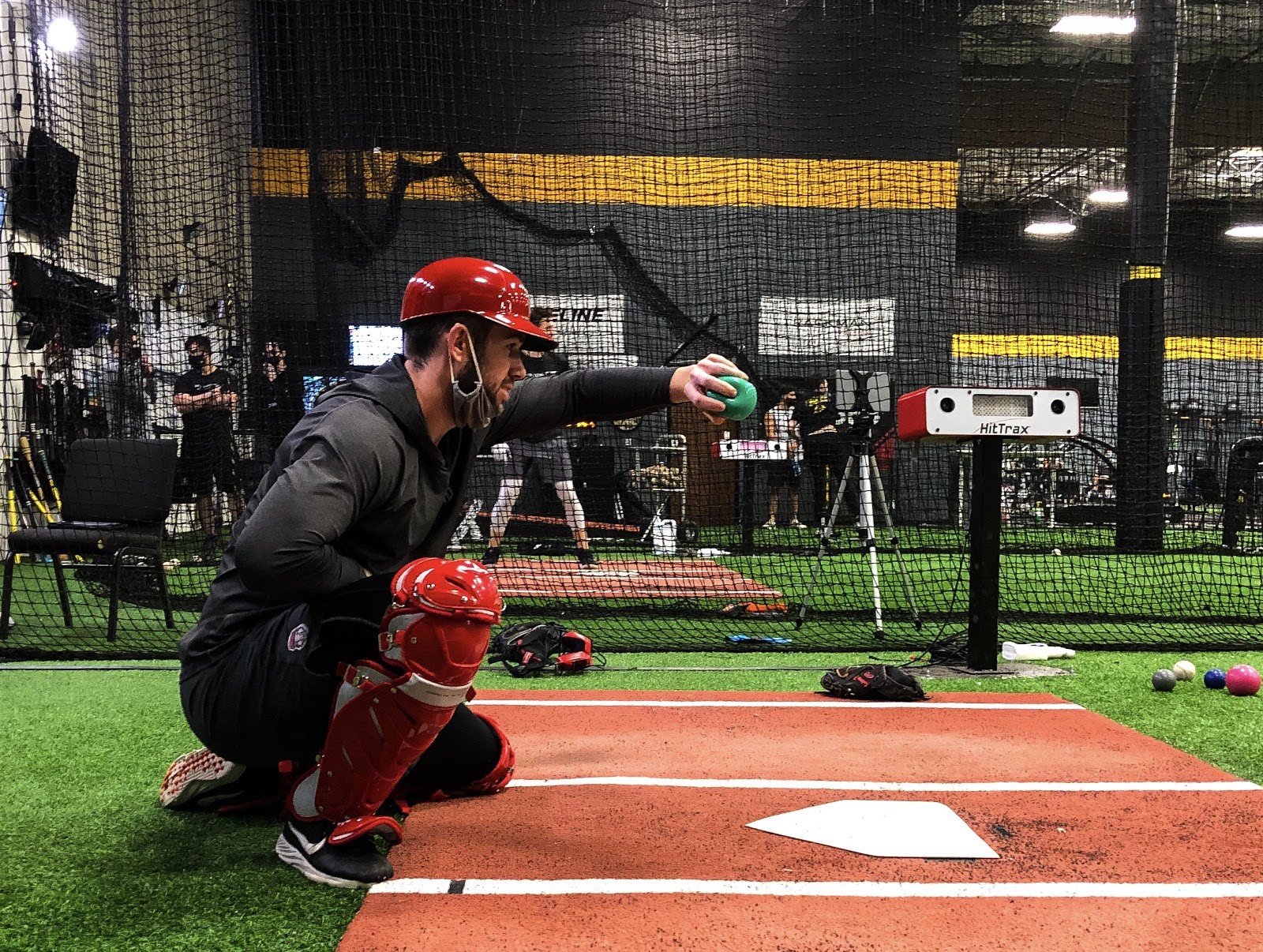An Introduction to Training the Baseball Catcher

At Driveline, we identify the key skills that matter for a baseball catcher — receiving, blocking, throwing — and build programs to develop them, preparing catchers to be elite at whatever level they play at.
In this post, we describe our catching program and how it optimizes the skills that make a backstop irreplaceable to their team.
Our Mission for Baseball Catcher Training
To deliver the best training tools and methods to our athletes through data-driven programming.

Catching Snapshot
Train at Driveline
Goals of Effective Baseball Catcher Training
- Create and implement a data-driven program for developing catchers.
- Conduct research to further understand the skills, movements, and characteristics that make catchers elite.
- Use this research to continually improve and enhance our training program.
Training catchers is mostly qualitative at this point, but we are working to change that. We will use the tools we have now to help our athletes succeed on the field. As athletes develop, this program will too. We believe that even the “intangible skills” that are often associated with catching can be developed.
Who’s it for?
As with all programs at Driveline, catching training is designed for the athlete who understands that improvement comes from focused effort over time. Catchers will be throwing at high intent, catching bullpens, and working on specific skills like receiving, blocking, and footwork.
How we Train
We train with Driveline’s Plyo Ball ®, weighted baseballs, Wrist Weights, J-Bands, iPitch Machines, and various training gloves. Additionally, we use Edgertronic cameras to film every catcher at 600 frames per second. This allows us to see how the glove is approaching the ball and how clean a catcher’s movements were after the receipt.
Video delay
A swing doesn’t necessarily have to pass the eye test. A catch/frame, however, does, because umpires make a judgement call based on what they see. One of the most powerful training tools we implement with catchers is a video delay feed. We want our catchers to see what they look like and how they move. During live at-bats we run a delayed video feed that allows the catcher to see how they received the ball right after the pitch. Every rep is replayed, which makes it clear whether it was a good receipt or not. Catchers can make quick adjustments based on this instant feedback loop.

Become the Hitter You Want To Be
Train at Driveline
How a Baseball Catcher can Become a more Effective Thrower
Athletes will receive programming based on strengths and weaknesses identified in an assessment. This will change over time, but our goal is to find the movement solutions that work for each player. From setup to frame, block, or throw, we work to get our athletes in positions that set them up for success.
These movements might not look the same for every athlete, but one thing is the same for all catchers: adding throwing velocity is good.
The mere presence of a strong arm behind the plate can deter the run game. A strong arm is one of the most sought-after skills in amateur catchers. Our programming is designed to increase quickness, accuracy, and velocity.
Train at Driveline
Ready to get to work? (In-gym and remote options are both available.)
- Athlete Questionnaire: Fill out with this link
- Email: [email protected]
- Phone: 425-523-4030
Written by Maxx Garrett – Catching Coordinator & Hitting Trainer
Comment section